Ready for a journey through the realm of aviation giants? In this article, we’ll take a tour of the top 10 largest airplanes in the world.
From colossal commercial carriers to massive military transporters, these airborne behemoths push the limits of engineering and human ingenuity.
Let’s explore their unique features, capabilities, and the vital roles they play in our global society.
Key Takeaways
- The Antonov An-225 Mriya held the title of the largest airplane ever built.
- The Stratolaunch boasts the largest wingspan in history, measuring an astounding 385 feet.
- The Airbus A380 is the world’s largest passenger aircraft, capable of seating up to 853 people.
- Military giants like the Lockheed C-5 Galaxy are essential for global cargo and troop transport.
What Does “Large” Mean?
Before we embark on our journey through the world of aviation giants, let’s take a moment to define what we mean by “large.” In the context of aircraft, size can be interpreted in various ways.
Are we talking about length, wingspan, height, passenger capacity, or cargo volume?
For the purpose of this list, we’ve chosen to rank these enormous airplanes based on their Maximum Takeoff Weight (MTOW).
MTOW is the heaviest weight at which an aircraft is certified to take off, encompassing the weight of the airplane, passengers, crew, cargo, and fuel.
Using MTOW as our primary measure provides a comprehensive view of the airplane’s size and capability. This is about not just the physical dimensions of the aircraft, but also its ability to transport heavy loads over long distances. This approach ensures that our ranking captures the true titans of the skies.
1. Antonov An-225 Mriya
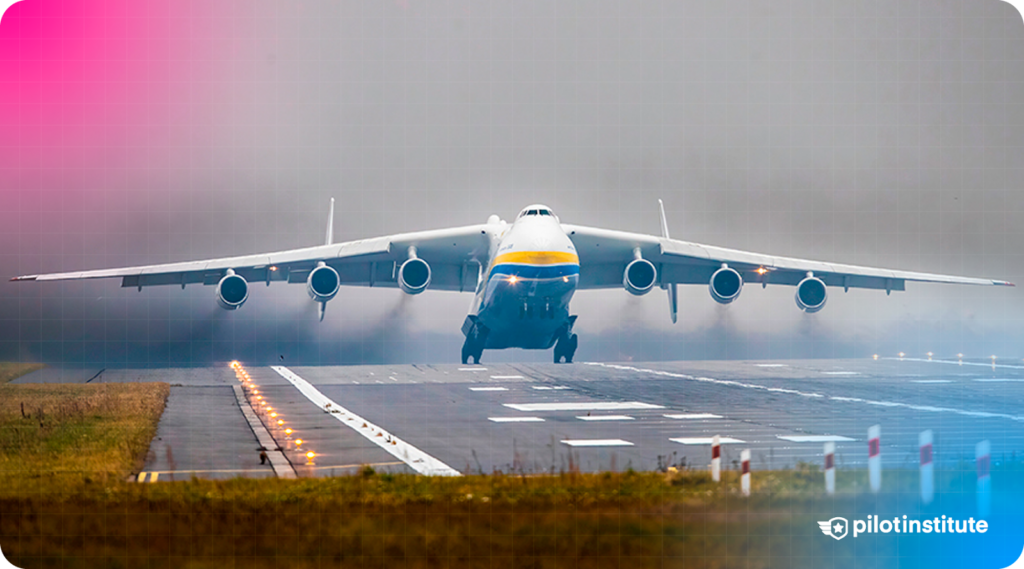
Topping the list of the largest airplanes is the Antonov An-225 “Mriya”. It is an aircraft that literally stands in a category of its own.
The An-225 Mriya, whose name translates to “Dream” in Ukrainian, is indeed a dream of engineering, an epitome of human ingenuity and strength.
With a maximum takeoff weight of a whopping 640 tonnes (1,400,000 pounds), the An-225 Mriya was first put to the sky in 1988. Despite its enormous size, this aircraft’s wings stretch out to an impressive 88.4 meters, and it measures 84 meters in length.
Remarkably, only one An-225 has ever been built. A second unit was in construction when the Soviet Union collapsed and has since remained uncompleted at a storage facility in Kyiv.
Unfortunately, the single operational An-225 was destroyed during the Russian invasion of Ukraine in 2022. The aircraft was at an airfield near Kyiv when it was attacked.
The Ukrainian state-owned manufacturer of the Antonov announced that the aircraft will be rebuilt at a cost of $500 million, which they aim to recover from Russia.
2. Scaled Composites Stratolaunch
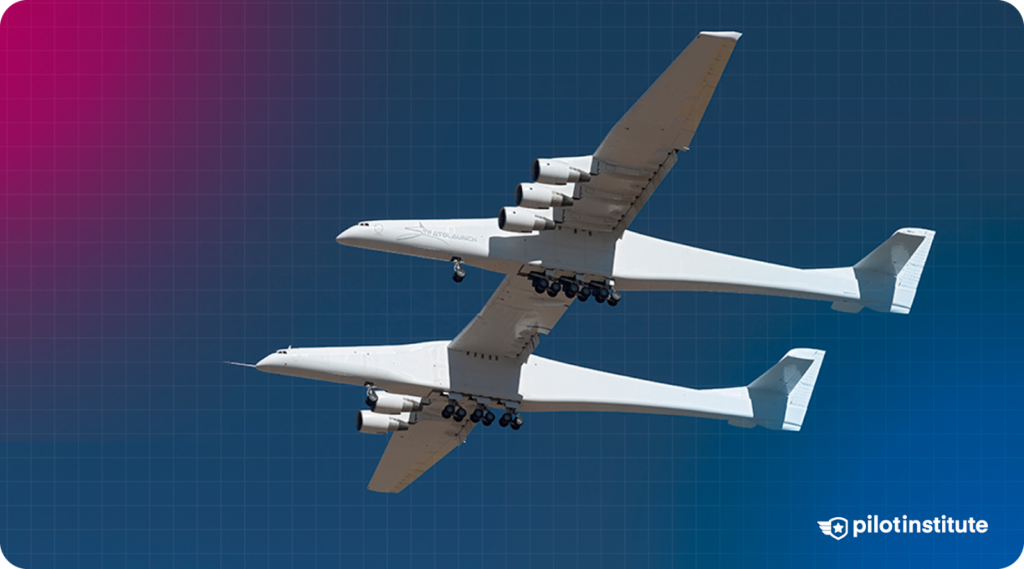
Say hello to the Stratolaunch, or as some may call it, the Roc. This brainchild of Scaled Composites was originally built for Stratolaunch Systems to carry air-launch-to-orbit (ALTO) rockets.
With a change in ownership, its purpose shifted towards offering air launch hypersonic flight testing.
This beast of an aircraft emerged into the public eye in December 2011 and finally saw the light of day in May 2017.
The Stratolaunch then took to the skies for the first time on April 13, 2019, marking a bittersweet milestone shortly after the passing of founder Paul Allen.
The Stratolaunch is an eye-catcher with its unique twin-fuselage design. But what sets it apart from all the others is its wingspan. With an impressive wingspan of 385 feet, it soared past the previous record held by the Hughes H-4 Hercules “Spruce Goose” at 321 feet.
Now, you might be wondering about its payload. The Stratolaunch can carry a staggering 550,000 pounds and has a maximum takeoff weight of 1,300,000 pounds.
However, operations hit a pause in May 2019, shortly after its first flight. By June of that year, all company assets, including the Stratolaunch itself, were up for sale.
The tides turned in October 2019 when Cerberus Capital Management acquired Stratolaunch Systems, including the aircraft.
With a renewed focus on high-speed flight test services, the Stratolaunch made a comeback. As of April 2023, this behemoth has taken flight ten times, including three with a hypersonic test aircraft. It’s now considered fully operational.
3. Airbus A380
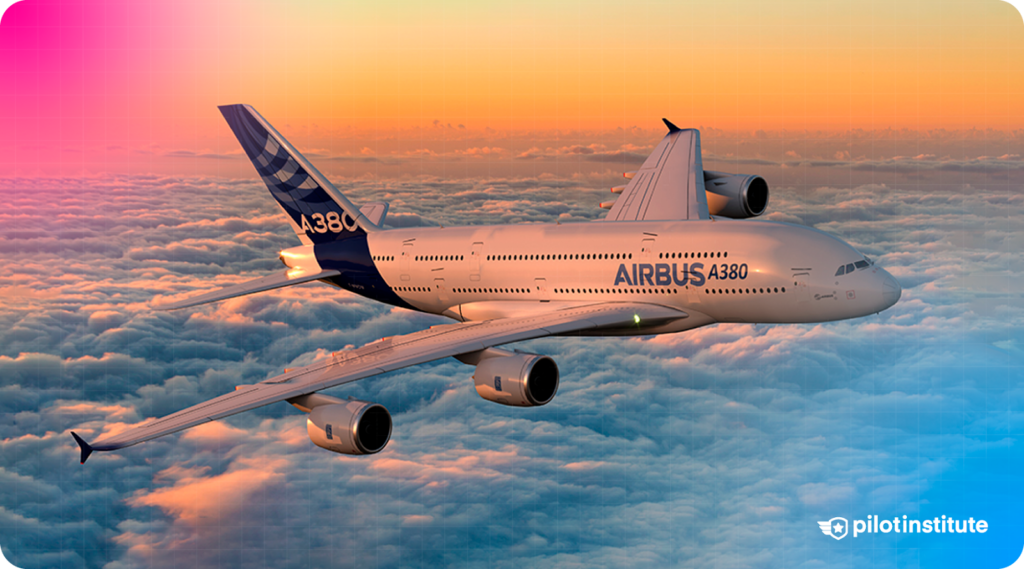
Next on our list is the Airbus A380-800, an incredible feat of aviation engineering that many of us have likely encountered on long-haul flights.
Launched by European manufacturer Airbus, this aircraft revolutionized the way we think about commercial air travel.
The Airbus A380 stands out from the crowd due to its sheer size. This wide-body aircraft boasts two full-length passenger decks that can comfortably seat between 525 and 853 people, depending on the seating arrangement. This enormous capacity makes it the world’s largest passenger airliner.
The A380, though, is more than just a big airplane. It’s also equipped with state-of-the-art technologies and design features aimed at enhancing the passenger experience. These include spacious seating areas, advanced entertainment systems, and quieter cabins.
Unfortunately, despite its innovations and passenger appeal, the A380 has faced commercial challenges. High operational costs and a change in airline models from hub-and-spoke to point-to-point have affected its popularity. The final A380 rolled off the production line in 2021.
However, you can still catch a ride on this sky giant. The Airbus A380 continues to grace our skies, leaving a trail of impressed passengers and aviation enthusiasts in its wake.
4. Lockheed C-5 Galaxy
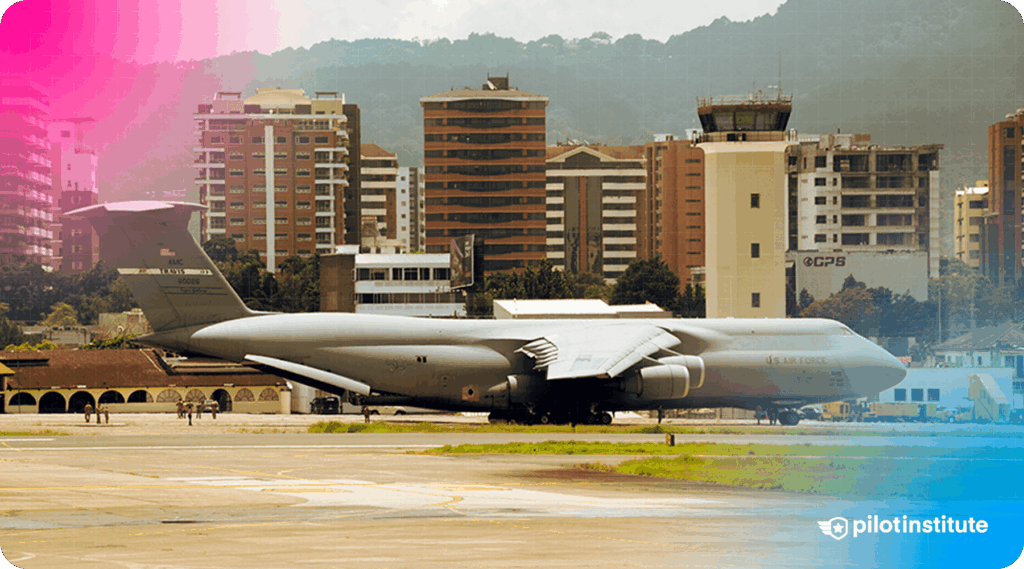
Let’s shift gears and delve into the realm of military aviation. Meet the Lockheed C-5 Galaxy, an American military cargo transport aircraft that’s a titan in its own right. Built by Lockheed, the C-5 Galaxy is one of the largest military transport aircraft in the world.
The C-5 Galaxy has a unique high-wing design, with four engines capable of delivering an enormous amount of thrust. It’s built to carry large, heavy cargo over intercontinental distances. In fact, its cargo hold is so vast it can comfortably transport two M1 Abrams tanks or even two Chinook helicopters.
But the C-5 isn’t just about raw cargo capacity. It also boasts a host of advanced features, like the ability to kneel down to facilitate cargo loading and an impressive range that allows it to fly vast distances without needing to refuel. Let’s also not forget its unique ability to refuel in flight, a capability that none of the other aircraft on this list share.
The Lockheed C-5 Galaxy, a real workhorse for the US military, has been in service for over 50 years. Even though it was initially introduced in the late 1960s, continual upgrades and refurbishments have kept this giant relevant and crucial for global military operations.
Whether it’s transporting troops, delivering essential equipment, or humanitarian aid, the C-5 Galaxy is up to the task.
5. Antonov An-124
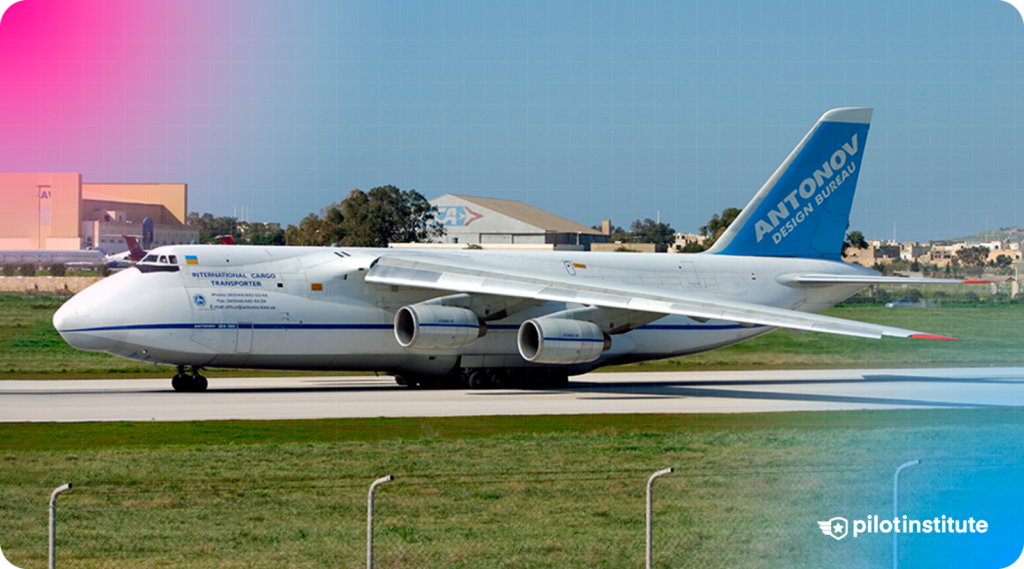
Venturing back into the realm of colossal aircraft, let’s talk about the Antonov An-124 Ruslan.
This strategic airlift jet aircraft is a proud product of the Antonov Design Bureau in Ukraine, known for its mammoth designs.
The An-124, nicknamed “Ruslan,” is one of the heaviest aircraft ever mass-produced. It’s not just about weight, though. This aircraft is all about carrying massive payloads. From other aircraft to space vehicles, the An-124 can haul it all.
In terms of design, the Ruslan sports a high-wing design with a sizable, cavernous cargo hold. Its unique nose and tail open to allow cargo to be loaded and unloaded from both ends, a unique feature that helps to speed up the process.
The An-124 has an impressive range and can travel long distances without refueling. This makes it an ideal choice for transporting heavy equipment across continents.
A notable aspect of the Antonov An-124 is its connection to its bigger sibling, the Antonov An-225 Mriya. Both hail from the same design bureau and share similar design features. The An-124 served as the blueprint for the An-225.
Despite its origins in the Soviet Union Cold War era, the An-124 is far from retirement. A testament to its timeless design and exceptional capabilities, this aircraft continues to serve in both commercial and military roles worldwide.
6. Boeing 747
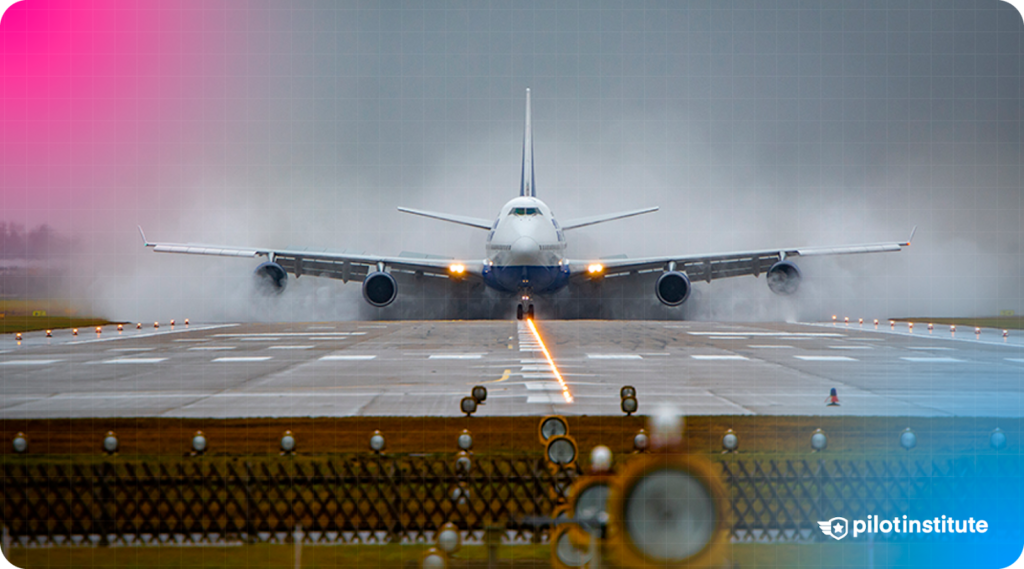
Turning our gaze to the iconic Boeing 747, we can’t help but admire this “Queen of the Skies.” This jet airliner from American manufacturer Boeing has been a significant player in aviation history, setting the standard for long-distance air travel since its debut in the 1970s.
Renowned for its distinct hump-like upper deck, the 747 embodies the spirit of aviation and long-haul travel. It has both passenger and cargo versions, with the passenger variant comfortably seating over 366 passengers in a typical three-class layout.
Yet, the market realities are changing. The industry is leaning towards single-aisle designs capable of long-range flights, which are more fuel-efficient and cost-effective.
Consequently, airlines have started to phase out the 747, even though freighter variants remain popular with cargo airlines due to their vast cargo capacity and range.
Unlike the A380, which as of yet is not used for cargo operations, the 747’s ability to carry cargo makes it an attractive choice for cargo airlines looking for large, second-hand, airliners.
After a 54-year production run, Boeing delivered the final 747 to Atlas Air in January 2023, marking the end of an era. With a total of 1,574 aircraft built, the Boeing 747 may no longer be rolling off the assembly line, but its legacy as the “Queen of the Skies” endures.
This magnificent aircraft continues to serve in cargo and passenger airline operations, reminding us of the golden age of aviation every time it graces the skies.
7. Boeing Dreamlifter
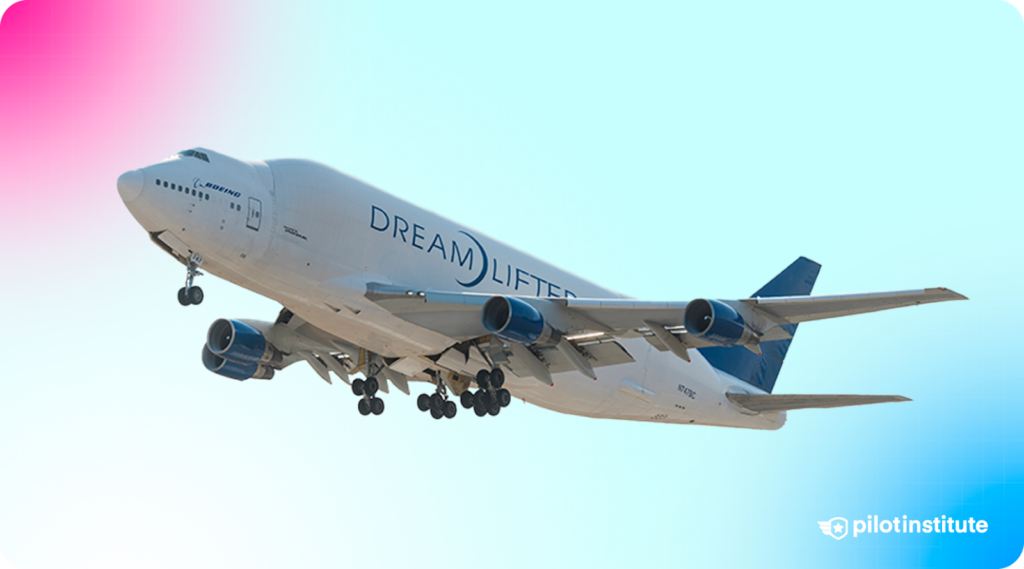
Let’s now shine a spotlight on a unique member of the Boeing family – the Dreamlifter. This aircraft is a heavily modified variant of the Boeing 747-400, but with a unique role that sets it apart from its siblings.
Created to transport large assembled parts of Boeing’s 787 Dreamliner, the Dreamlifter is an outsized cargo freight aircraft that boasts one of the largest cargo holds in the world.
Its distinct feature is the bulging fuselage, tailored to carry large components that cannot be easily broken down, such as wings and fuselage sections.
The Dreamlifter’s design and operational capabilities are truly unique. Instead of traditional cargo doors, it has a swing-tail design. The entire tail swings open to the side to allow large parts to be loaded and unloaded, a distinctive feature that adds to the aircraft’s unusual silhouette.
Despite its odd shape, the Dreamlifter can fly long distances to deliver components from suppliers around the globe to Boeing’s assembly facilities. This logistical marvel truly exemplifies the ingenuity in aviation design, showing how form can follow function in creating an aircraft to fulfill a specific need.
While the Dreamlifter may not be a common sight in airports around the world, its contribution to aviation is significant. It plays an integral part in the construction of the 787 Dreamliner, allowing Boeing to uphold its global supply chain and produce one of the most technologically advanced aircraft in the world.
8. Antonov An-22
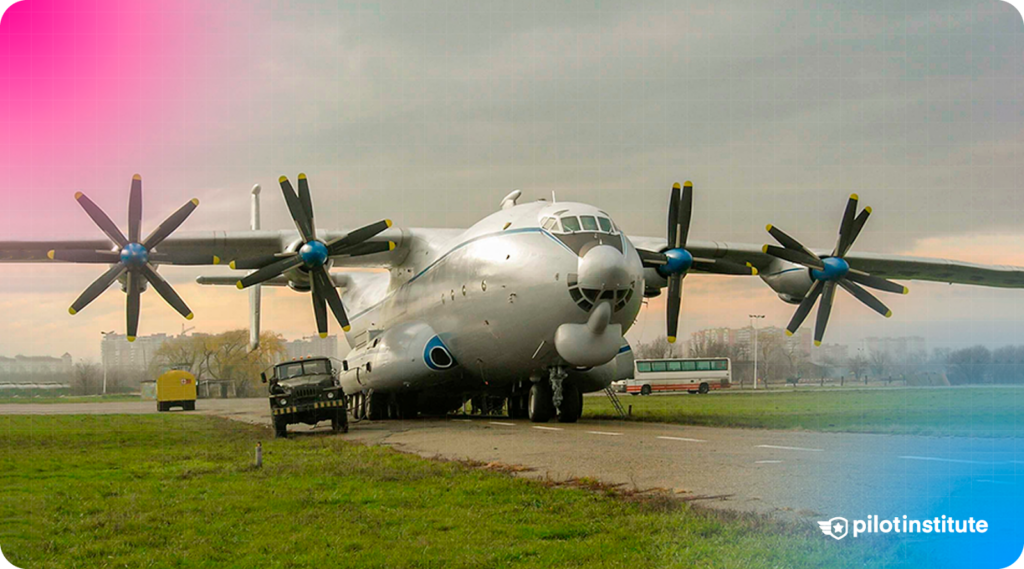
Shifting our attention back to the world of military and cargo transport, we meet the Antonov An-22 Antei. This turboprop-powered beast, originating from the renowned Antonov design bureau, holds the title of the world’s largest turboprop-powered aircraft.
Named “Antei,” the An-22 came onto the scene in the 1960s and promptly made a name for itself. The design features four pairs of contra-rotating propellers, a testament to its immense power and ability to carry heavy payloads. Its unique design is geared towards utility, making the An-22 an exceptional tool for moving large cargo.
The An-22 is not just about sheer power, though. It also brings versatility to the table with a massive rear cargo door, allowing for efficient loading and unloading of cargo. Additionally, its ability to operate from unprepared runways makes it highly valuable in challenging or remote environments.
The An-22 may not be a household name like some others on this list, but its record-setting size and distinctive design make it a standout in the world of cargo aircraft.
Whether moving military equipment, assisting in humanitarian missions, or transporting outsized cargo, the Antonov An-22 continues to demonstrate the incredible feats of engineering possible in global aviation.
9. XB-70
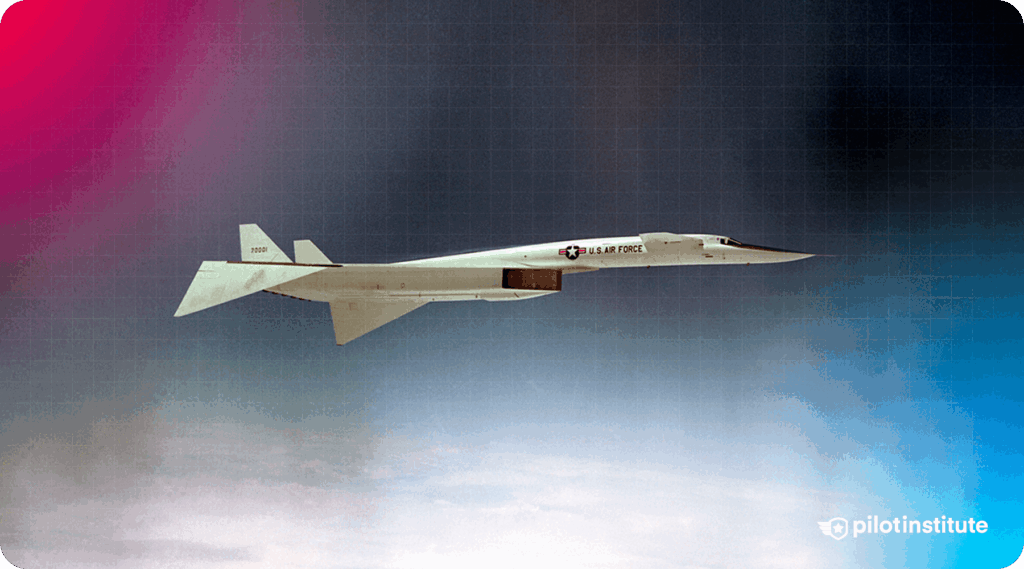
Stepping into the realm of experimental aviation, we encounter the North American XB-70 Valkyrie. This aircraft is a fascinating blend of ambition and innovation, designed as a prototype for a nuclear-armed strategic bomber.
Originating from the 1950s Cold War era, the XB-70 Valkyrie was envisioned as a high-altitude Mach 3 bomber. The aircraft’s performance capabilities were nothing short of revolutionary. Its sleek design, including a sharply pointed nose and folding wingtips, was specifically engineered to optimize high-speed flight.
However, advances in anti-aircraft missile technology caused a shift in strategic thinking, leading to the project’s cancellation. Only two XB-70s were ever built, and they never saw active service.
Instead, they became supersonic research vehicles, used to study aerodynamics, heating, and other aspects of high-speed flight.
One of the XB-70s met a tragic end in a mid-air collision during a photo shoot, but the remaining aircraft is on display at the National Museum of the United States Air Force in Ohio.
Despite its short-lived and tumultuous history, the XB-70 Valkyrie remains a symbol of technological aspiration, showcasing the daring possibilities of aviation design in the pursuit of extreme performance.
10. Airbus Beluga XL
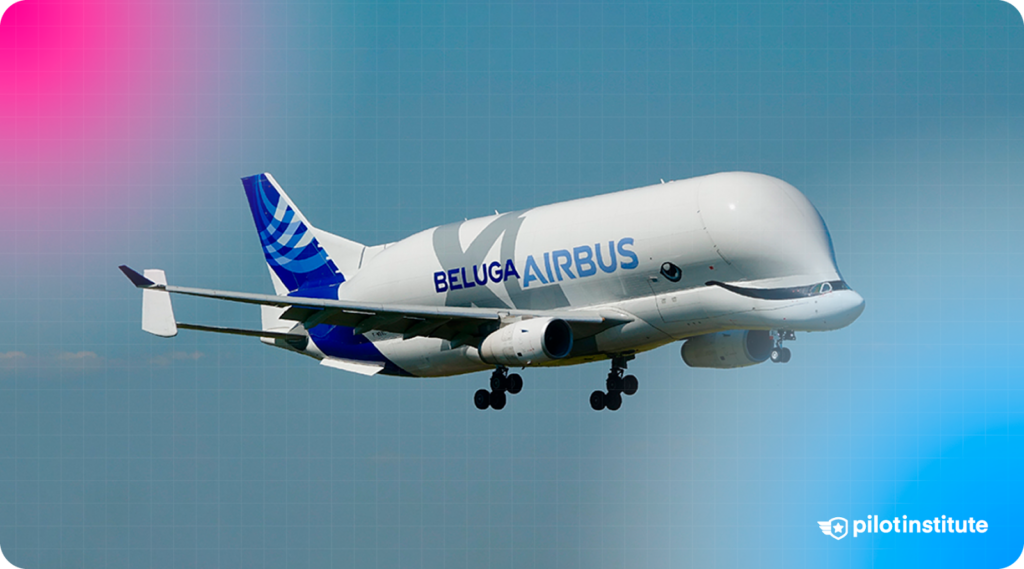
In the realm of oversized cargo aircraft, the Airbus Beluga XL definitely stands out. Based on the Airbus A330-200F, the aircraft shares little resemblance.
Compared to the original Beluga (based on the Airbus A300-600), the Airbus Beluga XL takes the cake with a 30% larger payload capacity.
The Beluga XL was designed by Airbus to meet its own transportation needs.
Its key role?
Transporting Airbus aircraft components between European production sites. The Beluga XL’s enormous cargo hold can accommodate wings or fuselage sections with ease, making it a critical part of Airbus’s manufacturing logistics.
But, it’s not just the size that grabs attention. The aircraft’s unique shape, reminiscent of its namesake whale, makes it instantly recognizable. Its massive cargo bay, which bulges out above the cockpit, gives the aircraft its characteristic “smiling” appearance.
The Beluga XL, while not a commercial aircraft, plays a crucial role behind the scenes in modern aviation. It’s a testament to the creativity and practicality of the design, addressing unique logistical challenges with a dash of creativity.
Conclusion
The aviation industry has experienced unparalleled advancements over the last century, and the aircraft featured in our top 10 list is a testament to that evolution.
Despite shifts in market trends and technological advancements, some of these giants of the skies continue to rule, serving crucial roles in global transportation, logistics, and defense.
Though we bid farewell to some legends like the An-225, their legacy endures in the grand history of aviation.
Meanwhile, the ongoing advancements in aircraft design promise a future where the boundaries of size, speed, and capability will be pushed even further.
One thing remains clear – the sky truly is the limit!



